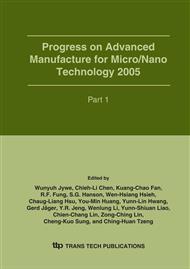p.1213
p.1219
p.1225
p.1231
p.1237
p.1243
p.1249
p.1255
p.1261
Combination of Spray Forming and Metal Powder Productions by the Internal Mixing Atomizer with a Substrate
Abstract:
This paper describes the performance of an atomizer coupled with a substrate which produces metal powder and spray forming materials simultaneous in the spray chamber. Ultra fine metal powders are produced from this process. The melt is atomized by a twin-fluid atomizer with internal mixing mechanisms. The molten spray injected from the swirling chamber of the atomizer is then impinged upon the substrate to form the two phase impinging flow. The deposition rate of the molten spray on the substrate is controlled by the diameter of the substrate, the height of the substrate ring and the distance of the substrate from the outlet of the atomizer. This in turn determines the powder production rate of the spraying processes. Experimental results indicate that the deposition rate of the spray forming material decreases as the distance between the substrate and the atomizer increases. For example, the deposition rate decreases from 48% to 19% as the substrate is placed at a distance from 20cm to 40cm. On the other hand, the metal powder production rate and its particle size increases as the substrate is placed far away from the atomizer. The production of metal powder with mean particle size as low as 3μ m level has been achieved, a level which is not achievable by the conventional gas atomization processes.
Info:
Periodical:
Pages:
1237-1242
Citation:
Online since:
January 2006
Authors:
Keywords:
Price:
Сopyright:
© 2006 Trans Tech Publications Ltd. All Rights Reserved
Share:
Citation:


